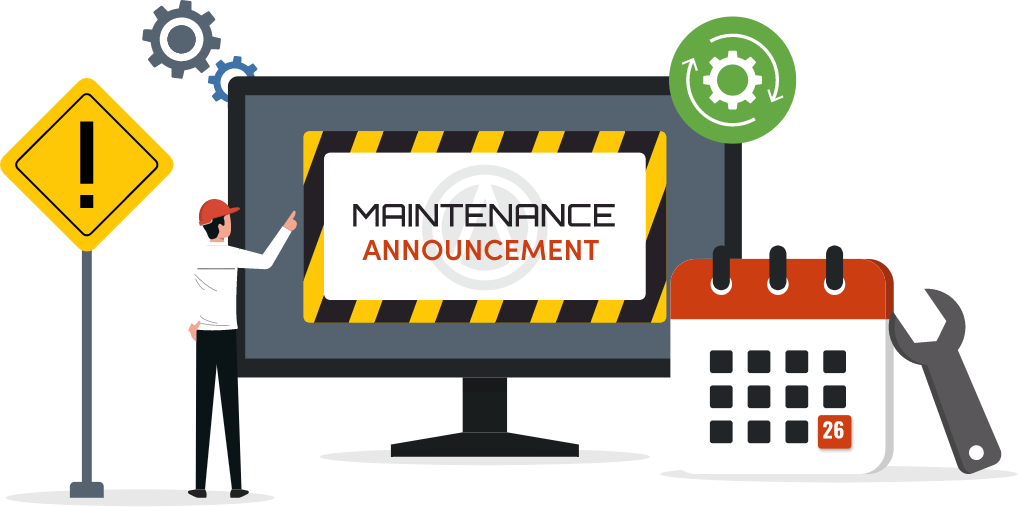How do I choose accounting software that fits my restaurant's needs?
Look for software that integrates with your POS, tracks inventory and payroll, and offers detailed reporting. Cloud-based solutions provide flexibility and scalability, which is crucial as your restaurant expands.
How to Set Up Your Restaurant's Accounting System for Maximum Efficiency
Understand the Unique Accounting Needs of a Restaurant
Running a restaurant means handling a lot at once - managing staff, tracking inventory, keeping customers happy, and trying to stay profitable. In the middle of all that, it's easy to let accounting slide. But having a clear and organized accounting system is one of the best things you can do to keep your restaurant running smoothly.
Without the right system, it's hard to know where your money is going, what your food is really costing you, or if you're making enough to stay ahead. And with most restaurant profit margins being very small- usually just 3% to 6% - every mistake can add up fast.
Before setting up your accounting system, it's important to understand how restaurant finances work. Restaurants aren't like other businesses - there are many small, fast-moving parts that need to be tracked closely. Here are the main things to keep in mind -
1. Daily Sales from Multiple Sources
Restaurants bring in money from several places - dine-in, takeout, delivery apps, catering, and more. Each one might have different fees, payment methods, and timing. Your accounting system should be able to handle all of these without confusion.
2. Food Costs and Inventory Move Fast
Food is one of your biggest costs - and it's perishable. You need to keep track of what you buy, what you use, and what goes to waste. If you don't stay on top of this, small losses can add up quickly.
3. Labor Costs Are Complex
You likely have a mix of full-time, part-time, and tipped workers. Payroll must track wages, overtime, tips, and taxes accurately. It also needs to meet local and federal labor laws. Mistakes here can lead to fines or unhappy employees.
4. Lots of Regular Expenses
Rent, utilities, vendor invoices, equipment, and supplies all need to be paid on time. If you don't track these properly, it's easy to miss a payment or lose track of where your money is going.
5. Sales Can Be Unpredictable
Your busiest days may be weekends or holidays. Seasons, weather, or local events can affect your income. That's why it's helpful to generate reports that show trends and help you plan ahead - even when sales go up and down.
Once you understand these needs, you can build an accounting system that works for your restaurant - not against it.
Choose the Right Accounting Method

One of the first big decisions when setting up your restaurant's accounting system is choosing between cash accounting and accrual accounting. This choice affects how you record income and expenses - and it can make a big difference in how you understand your financial health.
1. Cash Accounting (Simple and Common for Small Restaurants)
With cash accounting, you record money only when it actually changes hands. That means you count income when you get paid and expenses when you pay a bill. It's simple, easy to track, and often used by smaller or newer restaurants.
Pros
- Easy to understand
- Gives a clear picture of cash on hand
- Good for monitoring day-to-day operations
Cons
- Doesn't show the full financial picture (you might have bills coming due that aren't reflected yet)
- Can make it harder to plan ahead or understand true profits
2. Accrual Accounting (More Accurate but Complex)
Accrual accounting records income when it's earned and expenses when they're incurred, even if money hasn't changed hands yet. So if you serve a catering order today and invoice the customer, you still record the sale today - even if they pay you next week.
Pros
- Gives a more accurate view of income and expenses
- Better for understanding profit margins over time
- Often required as your business grows or seeks funding
Cons
- More complex and harder to manage manually
- Doesn't reflect your actual bank balance
3. Which Method Should You Use?
If you're just starting out and want to keep things simple, cash accounting might be the way to go. But if you plan to grow, take out loans, or bring on investors, accrual accounting will give you a better long-term view. Many restaurant owners start with cash accounting and switch to accrual later with the help of an accountant.
Select Appropriate Accounting Software
Choosing the right accounting software is one of the most important decisions you'll make for your restaurant's financial health. The right tool can save you hours of manual work, reduce errors, and give you the reports you need to make smart business decisions.
1. What to Look for in Restaurant Accounting Software
Not all accounting software is made with restaurants in mind. You want a system that can handle the specific needs of your business. Look for software that includes features like -
- Integration with your POS (Point of Sale) system to pull in daily sales automatically
- Inventory tracking to help manage food costs and supplies
- Payroll management for tracking wages, tips, and tax withholdings
- Vendor bill tracking so you know what you owe and when
- Custom reporting that helps you understand profits, losses, and trends over time
2. Cloud-Based vs. Desktop Software
Most modern restaurant owners prefer cloud-based software because it allows access from anywhere - your phone, tablet, or laptop. It also updates automatically and often includes backup and security features.
Desktop software can still be useful if you want to keep things offline, but it usually requires manual updates and local storage.
3. Scalability and Ease of Use
Choose software that can grow with you. If you plan to add locations, offer delivery, or expand catering services, your software should handle that without needing to switch platforms later. Also, make sure the system is easy to use. Complicated software can slow you down or cause mistakes if your team can't use it properly.
4. Cost and Support
Compare pricing plans and make sure the software offers customer support. Look for one that provides tutorials, live chat, or phone help in case you run into issues.
A good accounting tool should feel like a helpful assistant, not another headache. Once it's in place, it will be much easier to stay organized and focused on running your restaurant.
Design a Chart of Accounts
Once you've picked your accounting method and software, the next step is to create a chart of accounts. This is simply a list of all the categories you'll use to track your income and expenses. Think of it as the foundation of your financial system - it helps organize everything you spend and earn in a way that makes sense for your restaurant.
1. Why a Chart of Accounts Matters
A well-organized chart of accounts makes bookkeeping faster and reporting clearer. It also helps you spot trends, track your biggest costs, and understand where your money is going. Without it, your records can quickly become messy and hard to read.
2. Categories You Should Include
Your chart of accounts should be built around how restaurants operate. Here are some common account categories you'll likely need -
Income Accounts
- Food sales (dine-in, takeout, delivery)
- Beverage sales (alcoholic and non-alcoholic)
- Catering or event income
- Gift card sales or other revenue streams
Cost of Goods Sold (COGS)
- Food purchases
- Beverage purchases
- Packaging and supplies
Labor Expenses
- Wages and salaries
- Payroll taxes
- Employee benefits
- Tips paid out
Operating Expenses
- Rent or lease
- Utilities
- Insurance
- Equipment repairs
- Marketing and advertising
- Cleaning supplies
Other Accounts
- Bank fees
- Software subscriptions
- Professional services (legal, accounting)
3. Tips for Setting It Up
Keep it simple - don't over-complicate with too many categories. Start with the basics and adjust over time as you learn what data is most useful. Your accounting software may come with a chart of accounts template that you can customize for your needs.
Once your chart of accounts is in place, it becomes much easier to record and review transactions. In the next step, we'll talk about how to create workflows for entering data and keeping everything accurate.
Set Up Regular Data Entry and Reconciliation Workflows

Once your chart of accounts is ready, the next step is to build a routine for entering and checking your financial data. This is what keeps your books accurate, up to date, and useful. Even the best accounting software won't help if the numbers going in aren't correct or timely.
1. Daily and Weekly Tasks
It's a good idea to do a little bit of accounting every day. This prevents things from piling up and reduces the chances of missing something important. Here are some tasks you should stay on top of -
- Daily Sales Entries. If your POS system isn't connected to your accounting software, record your daily sales manually, broken down by type (food, drinks, delivery, etc.).
- Cash and Tip Tracking. Record any cash collected and tips paid out each day. This is especially important for staying compliant with payroll and tax rules.
- Receipts and Invoices. Enter vendor invoices and save all receipts. Try to do this the day you receive them or at least once a week.
2. Weekly or Biweekly Reconciliation
Reconciliation means comparing what's in your accounting software with what's in your bank account, credit card statement, or POS report. If something doesn't match, it's a sign that something was entered incorrectly or missed.
- Bank Reconciliation. Check that your bank deposits match your recorded income.
- Vendor and Bill Reconciliation. Make sure you're not missing any payments or duplicating entries.
- Inventory Spot Checks. Cross-check your inventory records with what's actually in stock.
3. Stay Consistent
Consistency is key. Whether you do this yourself or have a bookkeeper, stick to a schedule. Don't let several weeks go by without updating your records - errors are harder to fix the longer they sit.
Setting up these simple habits keeps your financial data clean, which makes everything from taxes to business decisions much easier.
Implement Inventory and Food Cost Tracking Systems
Inventory and food costs are some of the biggest expenses in any restaurant, and if they're not tracked closely, your profits can disappear fast. Setting up a system to manage inventory and calculate food costs helps you control waste, avoid over-ordering, and spot issues before they become expensive problems.
1. Why Inventory Tracking Matters
Every time you receive a delivery - produce, meat, dry goods, or drinks - you're adding to your inventory. And every time a meal is served, you're using up part of that stock. If you don't track what comes in and what goes out, you won't know how much food is being wasted, lost, or used inefficiently.
Even small errors in inventory can make a big impact. For example, if your kitchen is using 10% more cheese than expected each week, that could add up to thousands in lost profits over a year.
2. How to Track Inventory Effectively
Start by creating a list of all the items you stock, with units that make sense (pounds, ounces, bottles, etc.). Keep track of -
- What you ordered
- When it was delivered
- Where it's stored
- How much is used over time
Many accounting or inventory tools can help automate this. Some integrate with your POS system to track ingredient usage based on sales. But even if you do it manually, regular counts (weekly or biweekly) are essential.
3. Calculate Food Cost Percentage
One of the most helpful metrics in restaurant accounting is food cost percentage. It's calculated like this -
(Beginning Inventory + Purchases - Ending Inventory) / Sales x 100
This tells you how much of your revenue is being spent on food. Most restaurants aim for 28-35%, but this can vary depending on your menu.
By combining strong inventory habits with food cost tracking, you'll gain more control over your expenses - and more confidence in your bottom line.
Establish Payroll and Labor Cost Accounting Procedures
Labor is one of the largest and most complex expenses in the restaurant business. Between hourly wages, salaried employees, tips, overtime, and shift changes, it's easy for payroll to become a headache. That's why setting up clear payroll and labor cost tracking procedures is essential - not just for staying legal, but for protecting your profit margins.
1. Track All Types of Labor Costs
Start by identifying all the different ways you pay your team. This might include -
- Hourly wages for kitchen and service staff
- Salaries for managers or back-office roles
- Tips collected and distributed
- Overtime and holiday pay
- Employer taxes (Social Security, Medicare, unemployment)
- Benefits, if offered (like healthcare or vacation pay)
Your accounting system should capture each of these separately so you can see exactly where your money is going. Even small errors in tracking hours or tip distribution can add up quickly - or lead to legal trouble.
2. Use Time Tracking Tools
A good time-tracking system makes payroll much easier. Many POS systems come with built-in time clocks or can connect to labor tracking apps. These tools help ensure that clock-in and clock-out times are accurate and that break laws are being followed.
3. Schedule Payroll Periods and Stick to Them
Decide whether you'll pay employees weekly, biweekly, or monthly. Set a consistent schedule and make sure your payroll system is aligned with it. Missing payroll deadlines can lead to unhappy staff or even penalties.
4. Compare Labor Costs to Sales
To stay efficient, calculate your labor cost percentage (total labor costs / total sales x 100). Most restaurants aim for 20-35%. If your percentage is too high, it may mean you're overstaffed during slow periods - or not charging enough for your menu items.
Having a clear system for payroll and labor tracking helps you stay compliant, pay your team fairly, and make smarter staffing decisions.
Set Up Regular Financial Reporting and Review Processes
Once your accounting system is up and running, the key to maximizing its value is to make financial reporting and review a regular habit. Reports aren't just paperwork - they are your restaurant's health check, showing what's working, what's costing too much, and where you can improve.
1. Why Regular Reporting Matters
Running reports weekly or monthly helps you catch problems early. For example, a sudden spike in food costs could point to waste or theft. Or, if labor costs are rising faster than sales, you might need to adjust staffing. Regular reviews keep you informed so you're not just guessing how your business is doing.
2. Important Reports to Track
There are a few key reports every restaurant owner should understand and check regularly -
- Profit & Loss Statement (P&L). Shows your total income, expenses, and profit for a specific period. It helps you understand overall profitability.
- Cash Flow Statement. Tracks money coming in and going out, so you know if you have enough cash to cover bills and payroll.
- Inventory Valuation Report. Helps you monitor your stock levels and food costs.
- Labor Cost Report. Shows how much you're spending on wages compared to your sales, helping you manage staffing efficiently.
3. Schedule Regular Financial Reviews
Set aside time each week or month to review these reports. If you work with an accountant or bookkeeper, make sure you discuss any questions or concerns together. This habit helps you make better decisions - like when to cut costs, adjust prices, or invest in new equipment.
4. Use Data to Plan Ahead
Beyond looking at the past, use your reports to plan for busy seasons, holidays, or slow periods. Tracking trends over time gives you the insight to prepare for changes and avoid surprises.
By making financial reporting part of your routine, you turn numbers into actionable insights that support your restaurant's success.
If you're ready to streamline your restaurant's accounting and take control of your finances, check out Altametrics. Altametrics offers a powerful, all-in-one accounting solution designed specifically for restaurants. Their platform integrates seamlessly with your existing systems, automates key processes, and provides real-time insights to help you make smarter decisions every day.
Explore how Altametrics can transform your back office and help your restaurant operate smoother and more profitably by clicking "Book a Demo" below.














